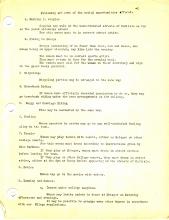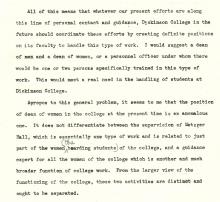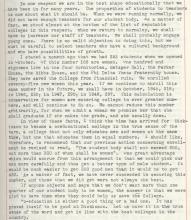Social Opportunities Offered to Female Students and Cadets
Included in the "Social Situation for the Guidance of Women Students" is a list of "Social opportunities" offered to female students and Army Air Force cadets. Social opportunities include regulations on walking in couples, hiking in groups, bicycling, horseback riding, buggy and carriage riding, bowling, tennis, movies, dances and dancing, prohibition, and out-of-town social events.






